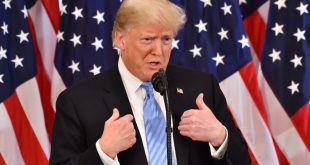Congress instructs the Federal Reserve to aim for maximum employment and price stability. The Fed has defined price stability as inflation averaging 2%, but maximum employment cannot be explained in such a simple manner.
In its monetary policy strategy statement, FOMC has pointed out that he maximum level of employment is a broad-based and inclusive goal that is not directly measurable and changes over time owing largely to nonmonetary factors that affect the structure and dynamics of the labour market.
FOMC’s policy decisions must be informed by assessments of the shortfalls of employment from its maximum level, recognizing that such assessments are necessarily uncertain and subject to revision. The Committee considers a wide range of indicators in making these assessments.”
What does this mean? Full employment is the highest possible level of employment the economy can sustain without generating unwelcome inflation. It describes an economy in which nearly everyone who wants to work has a job. The unemployment rate is one important way to gauge whether an economy is at maximum employment, but not the only one.
Did the Fed consider the US to be at maximum employment at the beginning of 2022?
January 2022 press conference, amid growing concern about rising inflation, Powell said that “most FOMC participants agree that labour market conditions are consistent with maximum employment,” which he defined as “the highest level of employment that is consistent with price stability.” The issue, Powell added, is “whether we can raise [interest] rates and move to a less accommodative [monetary policy]… without hurting the labour market.”
The unemployment rate is a percentage of the labour force, the sum of the unemployed plus the employed. This measure does not account for all idle workers and is not a sufficient measure of what is called slack in the labour market.
Fed does not just look at the unemployment rate, rather, policymakers know that the unemployment rate fell and inflation didn’t rise. Although the unemployment rate is a very informative aggregate indicator, it provides only one narrow measure of where the labour market is relative to maximum employment.
Fed Governor Lael Brainard has said. “For nearly four decades, monetary policy was guided by a strong presumption that accommodation should be reduced preemptively when the unemployment rate nears its normal rate in anticipation that high inflation would otherwise soon follow. But changes in economic relationships over the past decade have led trend inflation to run persistently somewhat below target and inflation to be relatively insensitive to resource utilization.”
Observers suggest that the Fed should keep interest rates low until the Black unemployment rate falls. But Powell has said, “The point of the broad and inclusive goal was not to target a particular unemployment rate for any particular group… And one of the things we look at is unemployment rates and participation rates and wages for different demographic and age groups and that kind of thing.”
The Labour Force Participation (LFP) rate is the number of employed people plus the officially unemployed divided by the civilian non-institutionalized population older than 16. In recent years, the LFP rate has been declining as the Baby Boomer generation ages and retires.
The failure of the LFP rate to return quickly to pre-pandemic levels led the Fed in late 2021 and early 2022 to judge that the economy was closer to maximum employment than it had anticipated. Powell noted that Fed officials hope “the level of maximum employment… consistent with stable prices may increase… as labour force participation gradually rises.”
The employment to population ratio is the employed as a percentage of the civilian noninstitutionalized population. It reflects those people who are counted as unemployed and those who are not working for some other reason—those who are retired as well as those who have given up looking for work.
JOLTS also counts the number of positions for which employers are actively recruiting and would start within 30 days of hire. The number of unfilled jobs is a measure of the unmet demand for labour. The ratio of the number of unemployed per job opening is a way to gauge the strength of the job market; the lower this ratio, the closer the economy is to maximum employment.
Outward shifts in the curve (that is, up and to the right) show a given level of job postings is associated with higher rates of unemployment. They are seen as indicators of unwelcome change in the labour market—an increase in mismatches between the skills of workers and the demands of employers, for instance, or a reluctance of jobless workers to take available jobs.
The Beveridge Curve did shift outward following the Great Recession. It shifted further outward during and after the COVID-19 pandemic; in other words, employers found it harder to hire at given rates of unemployment than they had in the recent past. When the unemployment rate fell to 4.2% in November 2021, the job openings rate was 6.6%. In September 2017, when the unemployment rate also hit 4.2%, the job openings rate was 4.1%.
The NAIRU (Non-Accelerating Inflation Rate of Unemployment) is an estimate of the lowest the unemployment rate can go without leading to rising inflation. The logic is that when there aren’t very many unemployed workers, employers raise wages and that leads to rising prices. The NAIRU is difficult to estimate precisely and can change over time as, among other factors, demographics, union strength, and the pace of productivity change.

 Noor Trends News, Technical Analysis, Educational Tools and Recommendations
Noor Trends News, Technical Analysis, Educational Tools and Recommendations




